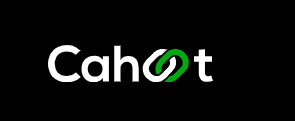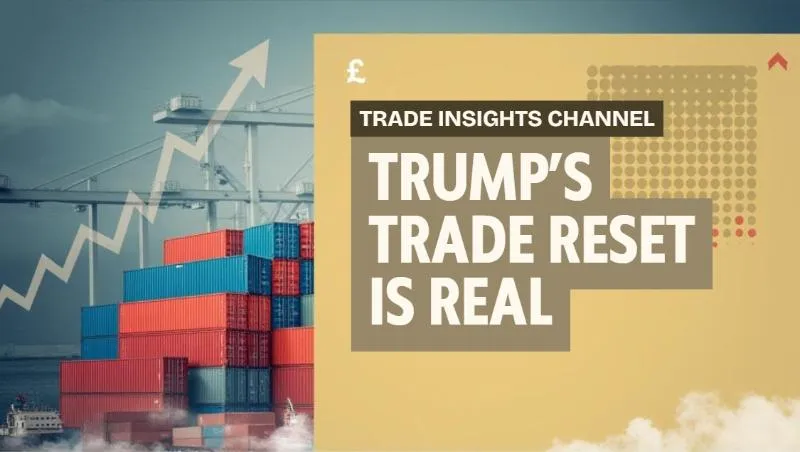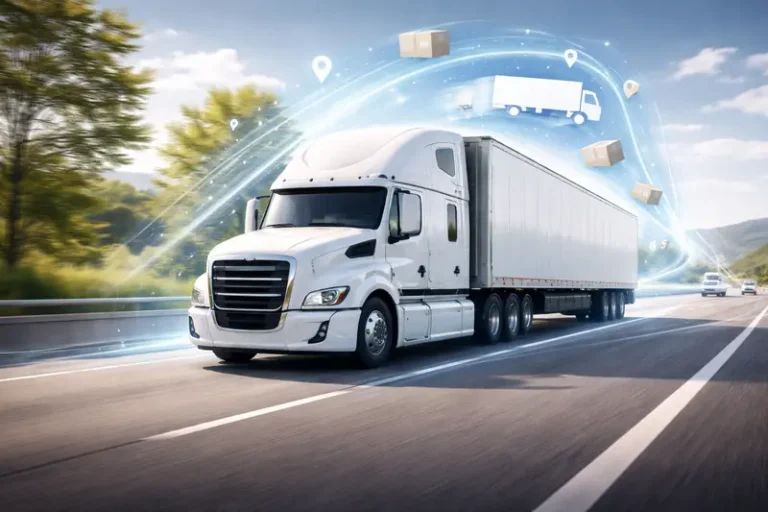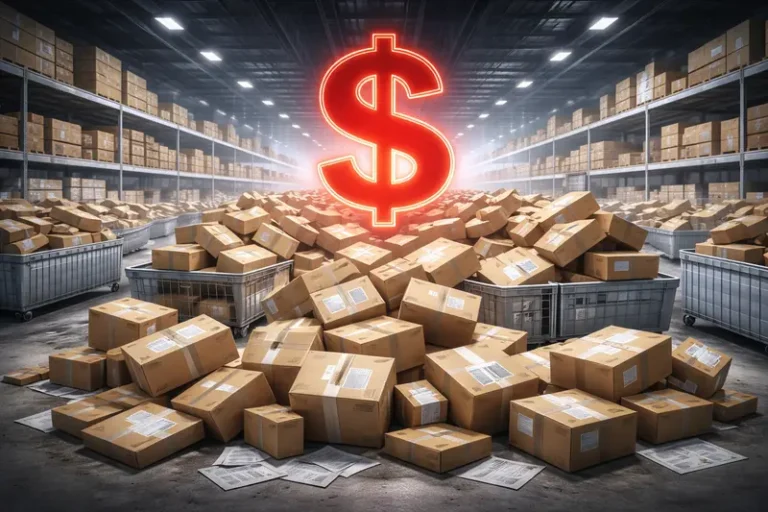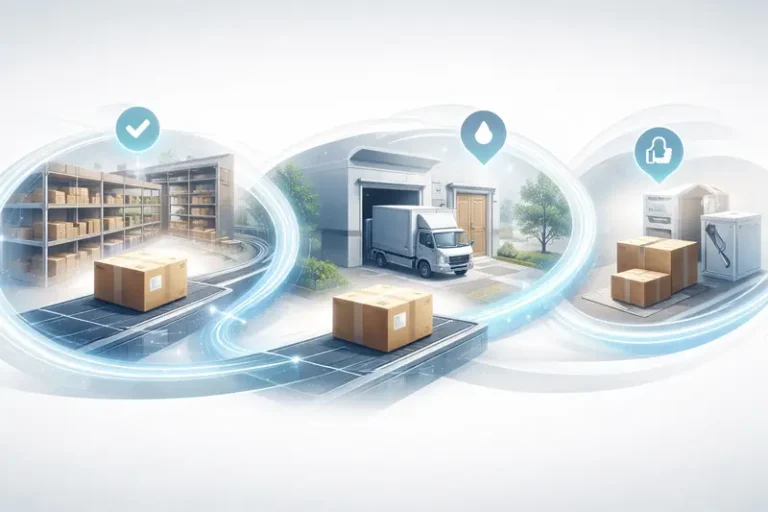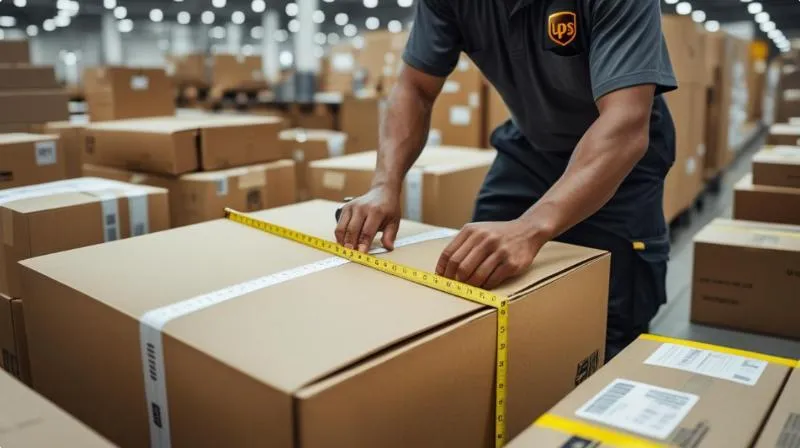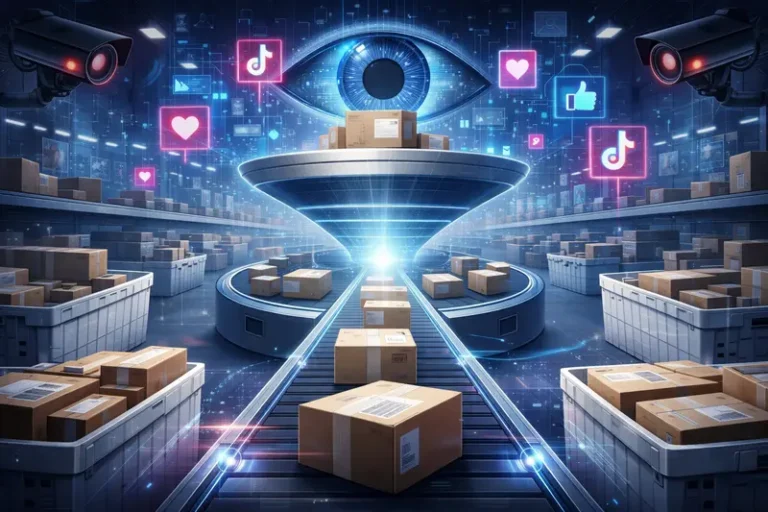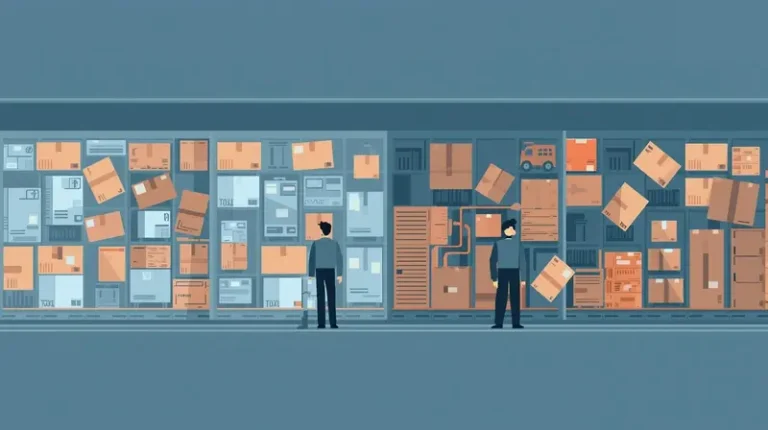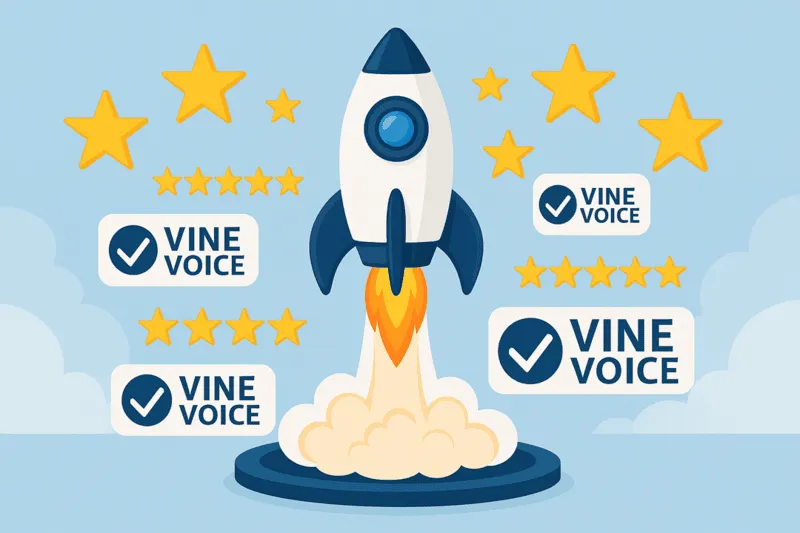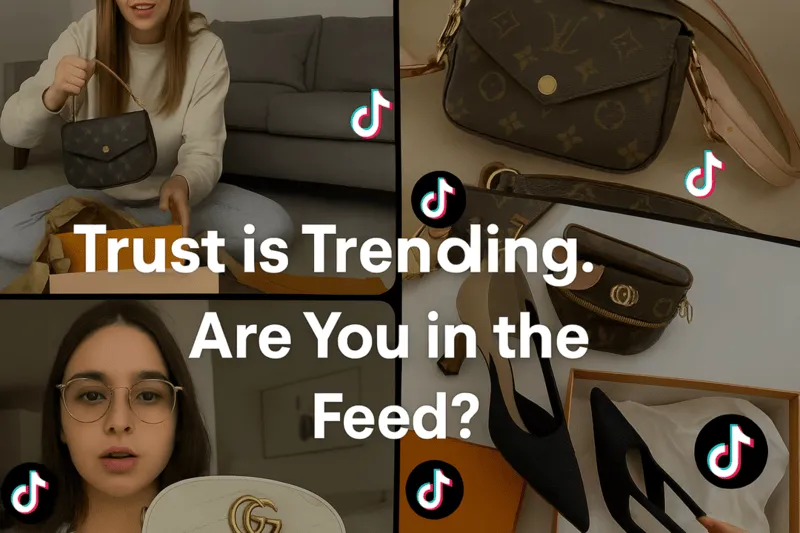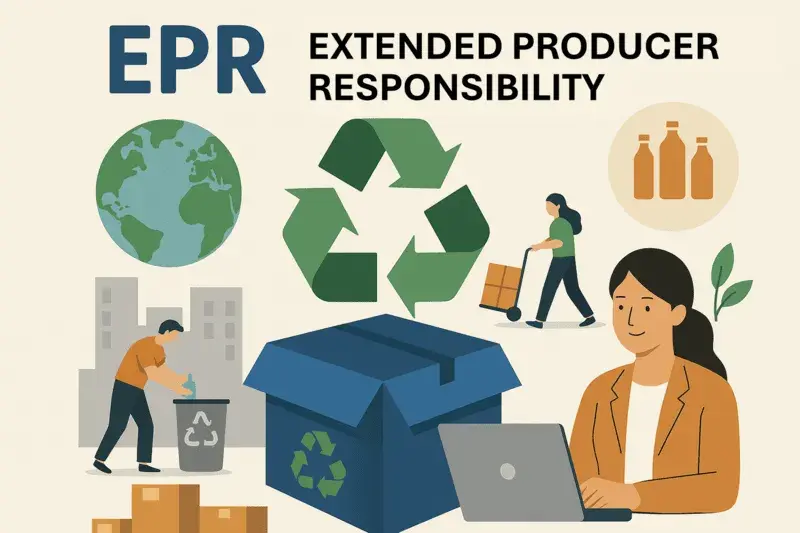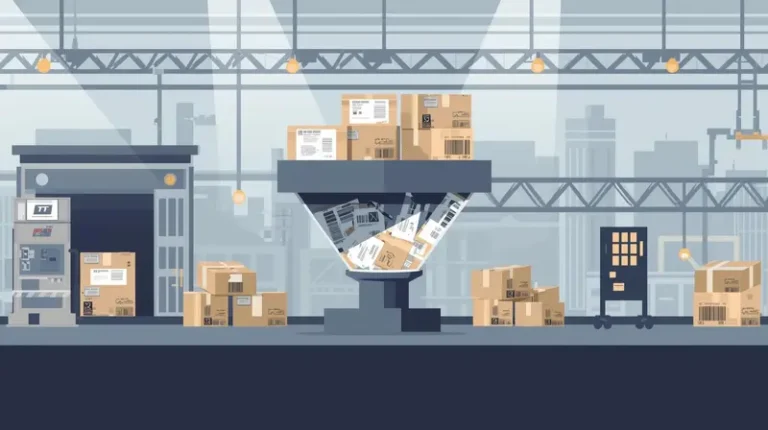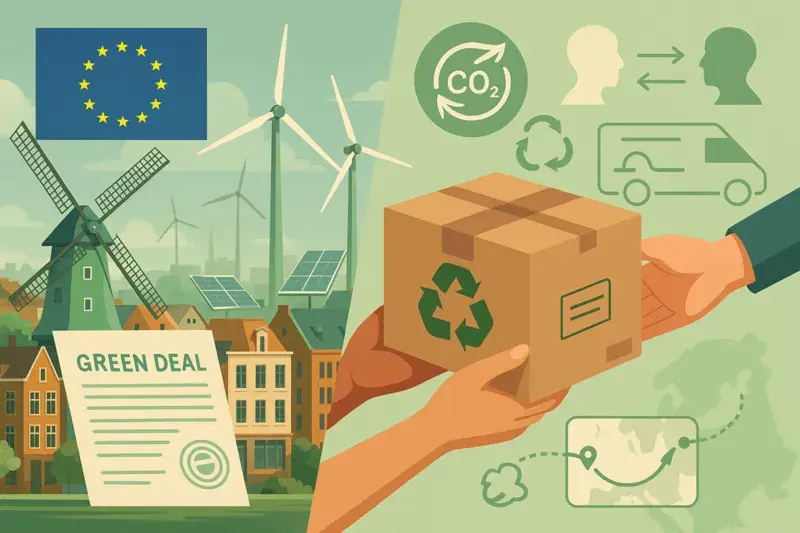Brace Yourself: Trump’s Tariffs Are Triggering the Next Ecommerce Reorg
Trump’s tariffs went live on August 7th, and yes, it’s messy. What we’re seeing now isn’t just numbers on a chart; it’s a full-on rattle through supply chains, pricing, strategy, and even brand identity.
What Just Happened?
On August 7th, the U.S. government implemented sweeping tariff hikes that have been repeatedly postponed since their introduction, affecting dozens of nations. Countries like Canada, the EU, Japan, South Korea, India, Brazil, and more were hit with new duties ranging from 10% to 50%. Some sectors, like semiconductors, face tariffs as high as 100% unless manufacturing is brought stateside. The expected impact? More than $300 billion in annual tariff revenue, up from $77 billion last year.
This Isn’t a Trade Skirmish, It’s a Strategic Reset
This isn’t like the 2018 China tariffs. This time, the scale is broader and the penalties more targeted. India was hit with 50% tariffs over its ties to Russian oil. Copper got a 50% tariff starting August 1. Switzerland faces 39%, Canada 35%, Brazil 50%. Even long-time allies like the UK didn’t get spared: 10% baseline. There’s no hiding behind “friendly” supply chains anymore.
Slash Your Fulfillment Costs by Up to 30%
Cut shipping expenses by 30% and boost profit with Cahoot's AI-optimized fulfillment services and modern tech —no overheads and no humans required!
I'm Interested in Saving Time and MoneyWhy Ecommerce Sellers Should Be Nervous
If you’re sourcing electronics, semiconductors, base metals, or consumer packaged goods from affected regions, your landed cost just exploded. The buffer of inventory on hand might help… for a few weeks. But when it runs dry, restocks will be brutally expensive unless you pivot your sourcing strategy fast.
Retailers without diversified suppliers are about to enter a pricing war with themselves, eat the cost, or pass it on? Neither is good for brand perception.
5 Real Impacts on Ecommerce Brands
- Skyrocketing COGS. Raw materials and components are suddenly 10 – 50% more expensive, especially for those sourcing from India, Canada, or Brazil.
- Last-minute rerouting. Brands are scrambling to shift to Mexico or Southeast Asia, where tariffs are lower, but contracts and production timelines are tight.
- Inventory imbalance. Expect overstocked goods from pre-tariff suppliers to get pushed while new SKUs are delayed or repriced.
- Customer confusion. Sudden price hikes with no explanation erode trust, especially on marketplaces like Amazon.
- Legal grey zones. Some of these tariffs are still under judicial review; brands don’t know if the fees will hold or be clawed back.
Cahoot’s Perspective: How to Stay Ahead
Now’s the time for every brand to get ruthlessly tactical. Here’s what we’re advising:
Run a tariff impact audit. Map every supplier and part by country of origin and assign risk scores based on tariff exposure.
Explore nearshoring. It’s not just about dodging tariffs. Shipping from Mexico or within the U.S. cuts days off delivery, which improves conversion and reduces return risk.
Bulk up on compliant SKUs. If your bestsellers are safe from tariffs, frontload inventory now before competitors drive up lead times.
Communicate with clarity. If prices are going up, don’t hide it. Build transparency with customers: “We’re adapting to global cost shifts, and here’s how we’re keeping value strong.”
Simulate, don’t speculate. Run three scenarios: full tariff continuation, partial rollback, or legal reversal. Adjust pricing, sourcing, and fulfillment options in advance, not in panic mode.
Final Thoughts
This is not a twilight event; it’s full daylight chaos in trade policy. Tariffs are real, they’re sweeping, and they’re reshaping cost equations, routing logic, and sourcing playbook. Ecommerce operators, logistics strategists, you’ve got work to do. But with foresight, modeling, and a little ingenuity behind you, you’ll not just survive, you’ll adapt, pivot, and thrive.
Looking for a New 3PL? Start with this Free RFP Template
Cut weeks off your selection process. Avoid pitfalls. Get the only 3PL RFP checklist built for ecommerce brands, absolutely free.
Get My Free 3PL RFPFrequently Asked Questions
Which countries are impacted most by Trump’s 2025 tariffs?
India (50%), Brazil (50%), Canada (35%), Switzerland (39%), and the EU (20 – 30%) are among the most heavily impacted. Over 90 countries are affected to date.
How will these tariffs affect ecommerce pricing?
Higher tariffs will raise costs for imported goods, forcing brands to either increase prices or take margin hits. Electronics, apparel, and raw materials will see the sharpest increases.
Are there legal challenges to these new tariffs?
Yes, a May 2025 court ruling deemed some of these tariffs unconstitutional, but that decision is under appeal. The legal outcome remains uncertain.
What can brands do now to mitigate risk?
Conduct a sourcing review, prioritize low-tariff countries, adjust pricing strategies, and use platforms like Cahoot to test fulfillment and inventory models under different trade scenarios.

Turn Returns Into New Revenue
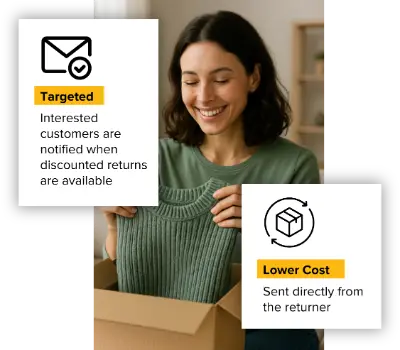
UPS DIM Weight: Matches FedEx with Dimensional Weight Change, and Yes, Your Margins Will Notice
UPS just matched FedEx on packaging trickery, rounding up every fractional inch in a package’s length, width, or height when calculating its dimensional weight (DIM weight) starting August 18. Another silent cost increase shipping pros like us need to wrestle with.
The What, When, and Why
Both UPS and FedEx now say, “If your box is 11.1 inches, we treat it as 12.” No more sweet rounding down at the half-inch mark. That’s a subtle but powerful switch. For example, if your box measures 8.2” x 6.5” x 3.9”, UPS will treat it as 9” x 7” x 4”. And if you’re shipping at scale, this change adds up fast. Keep in mind that if the longest side of your package exceeds certain limits, you may face additional charges or a change in rate category.
This wasn’t on the 2025 pricing roadmap early in the year. But by early August, UPS confirmed the move, aligning with FedEx’s earlier announcement for the same date: August 18.
Let AI Optimize Your Shipping and Boost Profits
Cahoot.ai software selects the best shipping option for every order—saving you time and money automatically. No Human Required.
See AI in ActionWhy It Matters, A Quick Math Example
Dimensional weight (DIM weight) is the king in shipping math-land; it uses (length × width × height) ÷ divisor to decide billing weight, and the higher of actual weight vs. DIM weight wins. The calculation of dimensional weight involves multiplying the package’s length, width, and height to get the cubic size, then dividing by the carrier’s dim factor (dimensional factor), which is a specific number set by UPS. This process is essential to calculate dimensional weight or volumetric weight, and the result is expressed in pounds.
Historically, UPS (and FedEx) calculated DIM weight using actual package dimensions, including fractions, which gave brands a little wiggle room when packaging tightly. Now, any fraction is rounded up to the next whole inch, which inflates the dimensional weight pricing for nearly every box. Think of it as the “rounding tax”; death by inches. The calculation is done in pounds, and the result is always rounded up to the next whole pound.
By rounding each dimension up just a hair… suddenly, cubic volume, and thus billable weight, jumps. For packages exceeding one cubic foot, different dim factors may apply, and UPS uses different numbers for retail rates and daily rates. In one example, a small box shoots from 6 lbs to 8 lbs DIM-weight, and that’s before surcharges. This calculation determines whether the billable weight is based on the actual package weight or the dimensional weight. And by the way, this doesn’t affect the weight on your label; you can tell UPS the box is any size you want, but their scanners will pick up the actual weight and sneak the “real” billed weight into your invoice. Dimensional weight calculations are important for both domestic and international shipments, and using a dimensional weight calculator can help estimate shipping costs accurately.
eShipper’s VP ran the numbers: a model shipper doing 2,500 packages a month sees a $32,678 annual bump, just from this rounding—no volume increase, just rounding.
Carriers Are Quietly Squeezing Margins
This isn’t a one-off. It’s part of a pattern; we’re deep into mid-year margin creep season: surcharges, zone changes, weight triggers. FedEx and UPS are no longer politely increasing GRI once a year, or waiting for peak season to implement Q4 surcharges. What we’re seeing here is an arms race in billing sophistication. Both carriers are squeezing more margin from every cubic inch. Shipping companies like FedEx and UPS use dimensional weight pricing as a pricing technique to optimize shipping rates and shipping cost, basing charges on package size rather than just weight. It’s not about moving packages more efficiently, it’s about charging more per unit of perceived volume.
What Ecommerce Pros and Brand Operators Should Do Now
If you’re an ecommerce brand shipping 1,000+ orders a week, this change will silently eat your margins. A few cents extra per shipment becomes thousands of dollars over time — and that’s before peak season surcharges hit. This change will hurt:
- Merchants using slightly oversized packaging (even if only by millimeters)
- Sellers who haven’t optimized box size or invested in cartonization software
- Brands that rely on single-node fulfillment and can’t zone-optimize shipping
Optimizing package size and packaging materials is essential to reduce shipping costs, especially when dealing with large packages, bulky items, or light packages. Carriers calculate shipping charges based on dimensional weight, so minimizing package size helps ensure you pay less and allows carriers to fit as many packages as possible into their vehicles.
ShipStation vs. Cahoot: 21x Faster, Real Results
Get the inside scoop on how a leading merchant switched from ShipStation to Cahoot—and what happened next. See it to believe it!
See the 21x DifferencePractical Takeaways: How to Adapt Right Now
- Audit packaging profiles: Even small fractions now cost real money—time to measure every template. Where are you paying for air?
- Use a UPS DIM weight calculator: Re-run your most common SKUs and packaging.
- Optimize box sizes: Right-size packaging or switch to flexible poly; trimming half an inch per dimension saves dollars more than you’d think. Reducing the space your package occupies in a truck can help lower shipping heavy items costs.
- Run scenario modeling: Use your shipping data to calculate the delta between the “old math” and the “new math” so finance isn’t blindsided. Note that different shipping carriers may have different dimensional weight policies, so compare options.
- Strategize your fulfillment network: Smaller boxes, smarter distribution; Cahoot’s multi-node platform helps you ship closer to the customer cost-effectively.
Cahoot Angle, Because We’re Not Just Shipping Software
Here’s where Cahoot helps bring clarity (and savings). Our platform enables smarter packaging rules, right down to optimal cartonization, so you don’t accidentally over-bill yourself. Cahoot also helps brands ensure their package dimensions meet shipping company requirements, reducing the risk of unexpected charges from shipping companies like FedEx, UPS, and USPS. Plus, with nationwide networked fulfillment and peer-to-peer returns, you shrink both parcels and long delivery times.
Here’s what you won’t get from a bloated warehouse management system:
- Cartonization automation built-in, not a bolt-on
- Real-time visibility into how packaging size impacts your shipping bill
- Multi-node elasticity: Scale up or down your fulfillment capacity with a national network that flexes with your demand
- No complex IT overhead, WMS integrations, or delays
- A solution designed for ecommerce sellers, not 3PLs stuck in 2015
Think of it this way: while carriers crank up DIM weight via rounding, Cahoot helps you counterbalance—less packing wiggle, more routing finesse, fewer surprise bills.
Putting It All Together, So What’s the Real Impact?
Dimensional weight changes feel minor, but they compound. Carriers just nudged your cost structure upward twice already this summer; this is a third strike, and doing nothing is not an option. The new dimensional weight policy applies to both domestic shipments and international shipments, and most packages will be affected, often resulting in higher shipping costs. But it’s not all bad news.
With a sharpened eye, smart packaging, and tools built to optimize fulfillment (like Cahoot), there’s a way to maintain margins, even in a world where every fractional inch counts.
Cut Costs with the Smartest Shipping On the Market
Guranteed Savings on EVERY shipment with Cahoot's AI-powered rate shopping and humanless label generation. Even for your complex orders.
Cut Costs TodayFrequently Asked Questions
What is UPS dimensional weight and how is it calculated?
UPS DIM weight is a pricing method based on the size of a package, not just its weight. It’s calculated as (L × W × H) ÷ 139. Now, each measurement is rounded up to the next inch before this formula is applied. The number 139 is called the dim factor (or dimensional factor), which is a specific number set by UPS. To calculate dimensional weight in pounds, you divide the cubic size of the package by this dim factor.
How does this change affect ecommerce sellers?
Sellers may see higher shipping charges, especially if packaging is not tightly optimized. This change increases shipping cost and shipping rates, particularly for large packages, bulky items, and light packages, as dimensional weight calculations now play a bigger role in determining the final price. Small differences in box dimensions can now lead to bigger billing weights, raising costs without warning.
How much more could I pay due to the DIM weight round-up rule?
It depends, but even minor changes can push DIM weight up a pound or two per package. This cost increase is a result of dim weight pricing and updated dimensional weight calculations used by carriers to determine shipping rates. Model scenarios showed cost jumps in the 6% to 9% range, and cumulative monthly billing increases thousands of dollars.
What immediate actions should brands take?
Measure all the things. Right-size packaging by carefully selecting package dimensions to fit your products, which can help reduce shipping costs and avoid extra charges from the shipping company. Run cost simulations. And, if you’re using Cahoot, lean on our platform to automate smarter routing, packaging, and scale-efficient fulfillment.
Can Cahoot help reduce dimensional weight shipping costs?
Yes. Cahoot’s platform includes cartonization software and multi-node fulfillment, helping brands use the smallest possible packaging and ship from closer to the customer — cutting both DIM charges and zone surcharges.
Do FedEx and UPS now use the same dimensional weight policy?
Yes. As of August 18, 2025, UPS matches FedEx by rounding up every dimension to the nearest inch, standardizing the DIM weight billing model across both major U.S. parcel carriers.

Turn Returns Into New Revenue

Shrinkflation Is Back: What Ecommerce Retailers Need to Know in 2025
In this article
 5 minutes
5 minutes
- What Is Shrinkflation (and When Did It Start)?
- Why Shrinkflation Isn’t Just About Product Size Anymore
- Why It’s Accelerating Now (And Who’s Leading It)
- Shrinking the Reverse Logistics Problem
- Should You Shrink Your Returns Policy?
- The Cahoot Take
- So What Should Brands Be Doing Right Now?
- Frequently Asked Questions
You know the feeling. You tear open your favorite snack bag, only to find it’s mostly air. You scroll Amazon for paper towels and realize the “12 = 24 rolls” trick isn’t fooling anyone anymore. That’s shrinkflation, where you’re paying the same, or more, for less.
But here’s the thing: Shrinkflation isn’t just a grocery store phenomenon. It’s creeping into ecommerce, DTC brands, and even the way retailers manage inventory, fulfillment, and returns.
So let’s unpack it. What is shrinkflation really doing to retail in 2025? And what’s your move if you’re running an ecommerce business?
What Is Shrinkflation (and When Did It Start)?
Shrinkflation has technically been around for decades. But it entered mainstream vocabulary during the post-pandemic inflation spike of 2021 – 2022, when CPG brands quietly started downsizing products without lowering prices.
Fast forward to 2025, and it’s become institutionalized. The Wall Street Journal recently reported that consumers now expect shrinkflation. It’s no longer a scandal, it’s a strategy.
What started with toilet paper and breakfast bars has extended to ecommerce packaging sizes, SKU quantities, return windows, and more.
Slash Your Fulfillment Costs by Up to 30%
Cut shipping expenses by 30% and boost profit with Cahoot's AI-optimized fulfillment services and modern tech —no overheads and no humans required!
I'm Interested in Saving Time and MoneyWhy Shrinkflation Isn’t Just About Product Size Anymore
Here’s where things get interesting. In ecommerce, shrinkflation shows up in ways that are harder to see, but just as costly:
- Bundles that include fewer items but still carry the same price tag.
- Return policies with stricter timelines and more exclusions.
- Free shipping thresholds are creeping upward, from $35 to $50, then $75.
- “Deluxe” editions that used to be standard, now basic, means barebones.
This is the kind of shrinkflation that impacts not just what consumers get, but what they expect from you as a brand. And it’s often hiding in plain sight.
Why It’s Accelerating Now (And Who’s Leading It)
In Q1 and Q2 of 2025, pressure on margins is back in a big way. Tariffs on Chinese imports, consumer pullback, and warehouse vacancies are making it tougher for ecommerce brands to survive, let alone grow.
So retailers are leaning into shrinkflation not as a one-time fix, but as part of a bigger playbook:
- Target quietly cut the size of its in-house tech accessories.
- A major DTC pet brand reduced its “starter kit” contents by 25%.
- A Shopify brand known for home goods reduced its return window from 60 to 30 days, citing “inventory health.”
They’re not advertising it. But if you read between the lines, or the reviews, you’ll spot the moves.
Shrinking the Reverse Logistics Problem
Here’s the twist nobody’s talking about: Shrinkflation isn’t just about getting more out of the sale. It’s also about cutting the cost of everything after the sale.
For example, returns.
In the past, brands could afford generous return policies because margins were fat. Not anymore.
Now we’re seeing:
- Fewer pre-paid return labels.
- More “final sale” language on seasonal SKUs.
- Higher restocking fees or “re-inspection” charges.
Returns are one of the biggest hidden costs in ecommerce, and shrinkflation is giving brands permission to quietly shrink that part of the business, too.
Looking for a New 3PL? Start with this Free RFP Template
Cut weeks off your selection process. Avoid pitfalls. Get the only 3PL RFP checklist built for ecommerce brands, absolutely free.
Get My Free 3PL RFPShould You Shrink Your Returns Policy?
Not automatically. If you’re building long-term customer trust, cutting corners on service can backfire.
But here’s what you should do: audit your reverse logistics. Ask questions like:
- Are we taking returns on items that can’t be resold profitably?
- Are our policies optimized for margin or for habit?
- Are there SKUs that should be final sale or non-returnable?
If the answer is yes, make strategic adjustments. Not punitive ones.
The Cahoot Take
At Cahoot, we’re seeing more brands experiment with leaner fulfillment and returns strategies, not by squeezing customers, but by gaining more control over how returns are routed, restocked, or resold.
For example, peer-to-peer returns allow brands to keep returned items circulating closer to the next buyer, avoiding restock delays and slashing return shipping costs. That’s not shrinkflation. That’s smart fulfillment.
Shrinkflation is inevitable. But how you manage it isn’t.
So What Should Brands Be Doing Right Now?
Well, you can’t completely avoid shrinkflation in today’s market. But you can be intentional about it.
Here’s what I’m telling brands:
- Be transparent where it counts. If you’re reducing bundle sizes, explain why.
- Audit returns before slashing them. Customer experience still matters.
- Get proactive with fulfillment efficiency before costs force your hand.
- Use this moment to clean up your SKU strategy, packaging waste, and shipping bloat.
And above all, don’t assume customers aren’t paying attention. They are, especially the ones you want to keep.
Frequently Asked Questions
What is shrinkflation in ecommerce?
Shrinkflation in ecommerce refers to the practice of reducing product quantity, features, or services while keeping prices the same or increasing them, often subtly, such as smaller bundles or stricter return policies.
How is shrinkflation affecting online retail in 2025?
Retailers are downsizing offerings, tightening returns, and raising shipping thresholds to protect margins amid tariffs, inflation, and slowed consumer spending.
Are consumers aware of shrinkflation?
Yes, consumer awareness is growing. Many are actively calling it out in reviews or social media, especially when changes feel deceptive or unacknowledged.
Is shrinkflation legal?
Yes, as long as the packaging and product info are accurate. However, misleading practices can risk reputational damage and consumer trust.
How can ecommerce brands manage shrinkflation without hurting loyalty?
Be transparent, audit returns strategically, and explore fulfillment models that cut costs without compromising the customer experience, like Cahoot’s peer-to-peer network.

Turn Returns Into New Revenue

Amazon Vine Reviews Are Now Allowed Pre-Launch (July 2025 Update)
In this article
 15 minutes
15 minutes
- What Is Amazon Vine (and How Did It Work Before 2025)?
- What Changed in July 2025? (Pre-Launch Reviews are Live!)
- A Boost for Conversion and Ranking
- Who Can Use Vine Now? (It’s Not Just Brand Owners Anymore)
- How Does Pre-Launch Vine Compare to the Past?
- Tips for Sellers: Making the Most of Vine’s New Powers
- Final Thoughts
- Frequently Asked Questions
Imagine launching a brand-new product on Amazon, and on day one, it already has a full page of glowing reviews. Sounds almost too good to be true, right? Well, Amazon just flipped the script for sellers. As of July 1, 2025, the Amazon Vine program got a major upgrade. Vine Voices (Amazon’s invite-only community of top reviewers) can now post product reviews before your listing even goes live. In other words, eligible products can launch with up to 30 real Amazon customer reviews on day one, and these reviews are immediately visible to Amazon customers, giving shoppers instant insight and confidence. This is a huge deal for Amazon sellers looking for an early boost in conversion, ranking, and customer trust.
What Is Amazon Vine (and How Did It Work Before 2025)?
For those not familiar, Amazon Vine is a program where a select group of trusted reviewers, called Vine Voices, receive free products from Amazon sellers or brands in exchange for writing honest, unbiased, and insightful reviews. These Vine members are not paid (aside from the free item) and are chosen based on their reviewer rank and past helpful votes from the Amazon community. Reviewers are invited to join the Vine program based on their review activity and reputation. Once invited, reviewers must accept the invitation to participate in the Vine program. Consistently buying things on Amazon and leaving detailed reviews can increase a customer’s chances of being noticed and eventually invited to the Vine program. The goal is to generate high-quality reviews that help other customers make informed buying decisions. Vine has been around for quite a few years (since the late 2000s), originally as an invite-only club for top reviewers.
In the past, Amazon Vine was available only to 1P vendors, but in recent years, Brand Registered 3P sellers have also been allowed to participate through Seller Central, provided their listings met Amazon’s criteria. But it wasn’t cheap; Amazon used to charge a hefty fee (around $200 per ASIN for many sellers) to participate. You’d create a new listing, enroll it in Vine, and then wait. Vine reviewers would claim the product, get it shipped for free, and then post a review after trying it out. However, those reviews would only appear post-launch (once your listing was live and the Vine member submitted their feedback). This meant new products often spent days or weeks with zero reviews until Vine Voices or early buyers chimed in. Sellers often had to hold off on big marketing pushes (like PPC ads) because a product with no reviews is a tough sell; most shoppers won’t even consider a product if nobody’s vouching for it. In fact, one analysis found that displaying at least five reviews can increase conversion rates by up to 270%, which shows how critical initial reviews are for buyer confidence.
Slash Your Fulfillment Costs by Up to 30%
Cut shipping expenses by 30% and boost profit with Cahoot's AI-optimized fulfillment services and modern tech —no overheads and no humans required!
I'm Interested in Saving Time and MoneyWhat Changed in July 2025? (Pre-Launch Reviews are Live!)
The big news is that Amazon now allows Vine reviews to be posted before a product’s public launch. This means you can have a full roster of reviews ready to go the moment customers first see your listing. Here’s how it works in practice:
- You create your Amazon listing but keep it in a “not yet live” state.
- Enroll that ASIN into the Amazon Vine program through Seller Central (it must be an FBA item in new condition, with fewer than 30 existing reviews, and you need to have a Professional seller account with Brand Registry).
- Specify the quantity of units (typically up to 30) you want to make available for review, and provide products to Vine reviewers by sending these units for them to test.
- Vine reviewers request your product, receive the free product shipment, and start testing it out immediately.
- These Vine members can then write their reviews before the product is available to the general public. Amazon holds those reviews in a queue.
- When you’re ready, you “flip the switch” to make the listing live for sale, and bam! All the Vine reviews that were written pre-launch become visible on your product page from day one.
Pretty cool, right? It’s essentially seeding your new product with social proof right out of the gate. Previously, reviews had to be gathered after launch, which delayed that crucial social proof and made launching a new ASIN feel like pushing a boulder uphill. Now, with Vine pre-launch reviews, Amazon sellers can start with momentum. By providing products and specifying the quantity for Vine, you can receive reviews from Vine members before your product is available to the general public. Imagine launching with 25 – 30 reviews that are labeled as “Vine Voice,” customers immediately see that real people have tried the product and shared their thoughts. This can only help conversions. Amazon itself touts that using Vine can boost sales by up to 30% for new launches (and that stat might climb higher now that the reviews can appear sooner).
A Boost for Conversion and Ranking
From a conversion optimization standpoint, this change is gold. Early reviews mean higher conversion rates because shoppers feel more confident. Instead of being the dreaded “zero-review” product that people skip over, your item has a healthy chunk of feedback. Social proof drives behavior; a shopper is far more likely to buy something that already has, say, 25 reviews and a 4.5-star rating versus a blank slate. There’s even evidence that just having a handful of reviews dramatically increases the likelihood of purchase (remember that five reviews = +270% conversion stat). Now you can potentially have those five (or twenty-five) reviews immediately. Early Vine reviews can also highlight key features, answer questions, and add photos or videos. Many Vine Voices write very detailed reviews, sometimes even uploading unboxing pics or demo videos, which can enrich your product page content. Vine reviewers often post their feedback within a week of receiving the product, helping to build early momentum for your launch. All of this not only convinces customers but also feeds Amazon’s algorithm, products with more engagement (reviews, Q&A, etc.) tend to get a boost in search ranking. It’s like jumping to level 5 while your competitors are starting at level 1.
However, there’s a flip side: Vine reviews are unbiased and not guaranteed to be positive. Vine members are asked to give honest opinions. If your product has flaws or doesn’t meet expectations, Vine Voices will call it out. This is risky if you rush a product that isn’t ready for prime time. The last thing you want is 10 bad reviews at launch because that can tank conversion just as fast. Even a single negative review from a Vine reviewer can significantly impact a seller’s life and business trajectory, affecting both reputation and future sales. So, while it’s tempting to enroll every new item in Vine, smart sellers will make sure the product is solid and the listing details are accurate to set reviewers’ expectations correctly. The Amazon Vine program isn’t about churning out good reviews; it’s about getting accurate and insightful reviews quickly. The hope is they’re positive, but they’ll be honest above all. In our experience, Vine Voices often provide balanced feedback, usually positive if the product delivers value, with constructive criticism if not. They have no reason to “spam” or slant things because their Vine status can be revoked if they abuse the program. (Remember, Vine members are selected by Amazon and want to maintain a good standing. Their reviews are marked with a special badge, and other customers can vote if the review was helpful, so Vine reviewers strive to be fair and thorough, not to mention they’ve been doing this for years. As a trusted source, feedback from Vine reviewers can shape a product’s reputation and influence its success.)
Looking for a New 3PL? Start with this Free RFP Template
Cut weeks off your selection process. Avoid pitfalls. Get the only 3PL RFP checklist built for ecommerce brands, absolutely free.
Get My Free 3PL RFPWho Can Use Vine Now? (It’s Not Just Brand Owners Anymore)
Another notable change is who’s eligible to enroll products in Vine. Historically, only brand owners (sellers with their brand in the Amazon Brand Registry) or vendors could use Vine. But Amazon has quietly expanded access. Now, authorized resellers can also participate in Vine for a brand’s products if they meet certain criteria. Essentially, if you’re a reseller who has been added as an official Brand Representative or Reseller on a brand’s Amazon account (via Brand Registry), and you have a Pro seller account with FBA, you can enroll that brand’s ASINs into Vine. Selling on Amazon is now more accessible for resellers who want to leverage Vine reviews to promote and gather feedback on their products.
This is a pretty big shift. It means brands can partner with their key third-party sellers to share the cost and effort of generating reviews. For example, if you distribute your product to a few authorized sellers, those sellers could volunteer to enroll new ASINs in Vine (spending their resources to give away units) to help kickstart sales for both of you. Amazon’s essentially saying, “We’ll allow more players to help get authentic reviews on new products.” The reviews still attach to the product (ASIN), not to any one seller, so it benefits the whole listing. From a brand perspective, that’s great—less pressure for you to do all the work for every new launch. From the reseller perspective, it’s a way to add value and potentially secure more buy box time if you help a product succeed (plus you’ll likely coordinate with the brand on this). The Amazon site serves as the central platform for coordinating these reviews and selling activities. It’s a win-win as long as everyone’s aligned.
How Does Pre-Launch Vine Compare to the Past?
Let’s put this into perspective. Previously, launching a new product meant you either crossed your fingers for organic reviews (slow and painful), or you enrolled in Vine and waited a few weeks post-launch to accumulate maybe 5 – 20 Vine reviews, or perhaps you used other programs (like Amazon’s Early Reviewer Program, which was discontinued in 2021). It always felt like a race to get that first review. Many sellers felt stuck because a product with zero reviews rarely gets purchased, but to get reviews, you need purchases—a classic chicken-and-egg problem. Vine was one solution, but it wasn’t instant.
Now, Amazon has essentially removed that lag. You can start day one with social proof in place. That’s a huge competitive advantage. It’s almost like having a built-in base of customer testimonials at launch. This drastically changes launch strategies. Sellers can confidently run ads immediately, knowing they have some review credibility. You can drive external traffic without fear that shoppers will bounce when they see “No reviews yet.” It’s also a confidence booster for the seller; launching is less scary when you’re not starting from zero.
From the buyer’s side, shoppers might not even realize the reviews were pre-launch Vine reviews; they’ll just see that green Vine Voice tag and presumably think, “Oh, someone in the Amazon community reviewed this.” Many savvy buyers know the Vine badge means the reviewer got the item for free, but they also recognize that Vine reviews tend to be detailed and genuine, not the one-liner spam reviews you sometimes see. Over the years, Amazon Vine reviews have a reputation for being thorough (often lengthy, with pros and cons listed). Many Vine Voices wrote detailed feedback that contributed to the program’s credibility. Still, some shoppers may wonder about the authenticity of reviews, especially with the prevalence of fake reviews. Amazon has sometimes been unable to fully prevent fake or biased reviews, which is why programs like Vine are important. In theory, that quality should remain high because Amazon still controls who gets to be a Vine Voice.
Scale Faster with the World’s First Peer-to-Peer Fulfillment Network
Tap into a nationwide network of high-performance partner warehouses — expand capacity, cut shipping costs, and reach customers 1–2 days faster.
Explore Fulfillment NetworkTips for Sellers: Making the Most of Vine’s New Powers
If you’re planning to use Vine’s new pre-launch feature, here are a few tips and insights:
- Ensure your product is ready: Don’t treat Vine as a magic bullet for a mediocre product. Vine reviewers will call out issues. You want those first 20 – 30 reviews to be overwhelmingly positive, if possible. Make sure you’ve tested your product, your quality control is on point, and your listing description is accurate (so Vine members aren’t surprised by anything). Using high-quality materials is crucial to avoid negative feedback and ensure durability, which can lead to better reviews and customer satisfaction. The Vine community has been around a long time; they’ve seen it all, and they will notice if something’s off.
- Time your Vine enrollment strategically: Ideally, you want Vine reviews to come in right around your target launch date. Vine reviewers typically post within a couple of weeks of receiving the product (some are quicker). It might make sense to enroll in Vine and ship units maybe 2 – 4 weeks before your intended “go live” date. That way, by the time you make the product available for sale, a chunk of Vine reviews are already written (or will be written soon). You can technically launch as soon as one Vine review is in (even one review is better than zero, sometimes one review can make the difference for that first shopper). But waiting until you have, say, 10+ reviews ready could make a stronger splash.
- Leverage the momentum: Once you launch with Vine reviews, capitalize on it. Ramp up your advertising (since now your ads show a product with a star rating), consider promotions, and monitor your conversion rate. You might find you can charge a premium price if those early reviews are stellar, because the value of social proof is significant. Also, those first reviews can reveal any common questions or minor cons that you can address quickly (either by updating your listing copy or in a future product iteration).
- Stay within Amazon’s rules: Vine is Amazon-sanctioned, but that means you need to stick to the program guidelines. Don’t try to influence Vine reviewers (no reaching out to them to beg for a 5-star rating, a big no-no). Also, you have to eat the cost of those free units and the Vine enrollment fee (if any). The good news is Amazon has made Vine more accessible cost-wise, as of 2025, new Brand Registry sellers get a $200 Vine credit and can enroll up to 2 products for free. Additional enrollments might cost a nominal fee (much less than $200 in many cases). Always check the latest Vine fee structure in Seller Central.
- Monitor the outcomes: Keep an eye on how those Vine reviews perform. Are they getting “helpful” upvotes from other customers? A review with many helpful votes will rise to the top of your review section, becoming the de facto first impression. Vine Voices often write “insightful reviews” that others mark as helpful, which is great. If a Vine review highlights a product improvement, consider commenting on it or actually making that improvement. Showing that you’re attentive to feedback can turn a potentially negative point into a positive for future customers reading the reviews. Be prepared to handle refund requests if Vine reviews reveal significant product issues, as managing refunds promptly can help maintain your seller reputation. If you encounter problematic or inappropriate reviews, remember you can report them to Amazon for review and possible removal.
Final Thoughts
In summary, Amazon’s new Vine update is a game-changer for launching products. It levels the playing field a bit between new entrants and established products. Now, even a brand-new ASIN can look seasoned from day one. It’s not an exaggeration to say this could be one of the most impactful changes to Amazon’s review ecosystem in years. We’re pretty excited about it (as you can probably tell). It aligns with Amazon’s push to help trusted brands and sellers hit the ground running, while still providing accurate and insightful reviews for customers.
As ecommerce operators, we live and die by reviews and customer trust. Seeing Amazon allow pre-launch reviews is like getting a head start in a marathon. You still have to run a good race (i.e., have a good product, good marketing, and all that), but at least you’re not starting 50 yards behind the line with a blindfold on. Take advantage of this if you can. And if you need help strategizing your launch or managing the logistics (after all, once those orders roll in, you’ve got to fulfill them seamlessly, that’s where Cahoot can help on the fulfillment side), don’t hesitate to reach out to experts or partner services.
Happy launching, and may your new products rack up Vine reviews and sales in record time!
Frequently Asked Questions
What’s changed with Amazon Vine in July 2025?
Sellers can now get Vine reviews before a product goes live, giving listings a major head start.
How many reviews can you get before launch?
Up to 30 Vine reviews can be posted pre-launch.
Why do pre-launch reviews matter?
They improve conversion rates, boost search rankings, and create early trust.
Do Vine reviews cost money?
Sellers provide the product for free, but Amazon charges a submission fee per ASIN.
Is Vine worth it for new products?
Yes, especially for higher-priced or competitive items where early momentum is crucial.

Turn Returns Into New Revenue

Luxury Brands on TikTok: How TikTok’s Influence Is Reshaping Luxury Retail
In this article
 8 minutes
8 minutes
- Luxury Brands on TikTok: From Reluctant to Ready
- Gen Z Trusts TikTok More Than Traditional Retail
- Physical Footfall Meets Digital Discovery
- For Ecommerce Operators: What This Means
- TikTok Is a Platform, but It’s Also a Lens
- Ecommerce Is Now Entertainment
- Final Take: Don’t Chase Trends. Build Culture.
- Frequently Asked Questions
When you think of luxury fashion, what comes to mind? Glossy magazines. Paris runways. $3,000 handbags. Today, luxury fashion brands are embracing new strategies on TikTok, adapting their traditionally exclusive image to connect with younger, digital-savvy audiences.
Now add this to the list: A teenager in sweatpants unboxing Louis Vuitton on TikTok while dancing to a trending sound.
Welcome to luxury in the age of TikTok, where Gen Z’s trust in fashion is built in 30-second videos, not storefronts. And it’s not just an aesthetic shift, it’s reshaping retail, ecommerce, and how consumers decide what’s worth their money, as the social platform continues to redefine the landscape of luxury retail.
Luxury Brands on TikTok: From Reluctant to Ready
For years, luxury brands avoided TikTok like it was fast fashion. Too noisy, too chaotic, too “off-brand.” But as the luxury space evolves, TikTok is changing how these brands connect with new demographics and build cultural relevance.
But the tide has turned, and not just for views.
Brands like Louis Vuitton, Gucci, and Fenty Beauty are now leaning into TikTok strategy, developing innovative strategies to engage audiences and drive brand awareness. These luxury brands and other premium brands are leveraging TikTok’s unique features to create engaging posts that resonate with their target audiences. Their success is evident in increased engagement rates, higher visibility, and a stronger connection with younger consumers. This shift marks a new mindset for the luxury brand world, as even established fashion brands are adopting TikTok to showcase their collections and personalities.
Why?
Because the average engagement rate on TikTok is over 5%, it dwarfs other platforms, especially when brands focus on engaging content and creative posts. Because Gen Z audiences don’t want to be sold to, they want to be in on the moment. Because TikTok users treat brands as characters in a shared story, not distant monoliths, and brands are tailoring their content to these audiences for maximum impact.
Slash Your Fulfillment Costs by Up to 30%
Cut shipping expenses by 30% and boost profit with Cahoot's AI-optimized fulfillment services and modern tech —no overheads and no humans required!
I'm Interested in Saving Time and MoneyGen Z Trusts TikTok More Than Traditional Retail
A growing number of young people don’t trust billboards or brand websites. They trust when a user comments, “this bag is worth it” on a GRWM video, seeing it as authentic engagement.
This isn’t just “social proof,” it’s social curation. TikTok creators become tastemakers. They translate luxury fashion into something relatable, even aspirational, again, for an audience who grew up during economic uncertainty. The interest generated by TikTok content drives higher engagement and sales, as customers are drawn in by rising curiosity and platform popularity.
Brands are increasingly listening to their customers, using feedback and reviews to shape brand perception on TikTok. Understanding customer preferences and sharing educational content helps build loyalty and makes luxury products more accessible and desirable.
It’s less “here’s a product” and more “here’s how this product makes me feel.”
Physical Footfall Meets Digital Discovery
Surprisingly, TikTok isn’t just fueling online sales. It’s driving physical store visits, too.
Fashion-savvy users are tracking down items they saw in TikTok hauls. They’re walking into stores asking for the “bag that was in that one TikTok.” It’s a full-circle effect: video to vibe to visit to value.
For retailers, this is a goldmine if you’re tracking where that foot traffic originates. A key point here is the importance of integrating your POS, ecommerce, and social data; if these are siloed, you’re flying blind.
For Ecommerce Operators: What This Means
Let’s talk tactics. If you run an ecommerce brand, luxury or not, here’s what TikTok is teaching us: Having a clear social strategy is essential for success on TikTok, guiding your approach to content creation, engagement, and brand positioning. Focus on creating content that resonates with TikTok audiences by leveraging trends, challenges, and authentic storytelling. Don’t just rely on influencers; producing your own content, such as branded videos and behind-the-scenes clips, can help boost your brand’s presence and connect directly with your audience.
1. Authenticity Beats Polish
Forget hyper-produced ads. On TikTok, creativity is a key driver of authentic content that resonates with audiences. Content that performs is real, messy, and human. Brands can engage with their audiences by creating content that feels real and relatable, think user-submitted videos, founder behind-the-scenes, and imperfect moments.
2. Your Creators Are Your Retailers
TikTok creators don’t just create, they convert. Influencers, including both celebrities and micro-influencers, play a crucial role in driving sales and building brand awareness through authentic partnerships. A shoutout from a mid-tier creator or influencer can outperform paid ads. Brands often collaborate with models as part of their influencer marketing strategies to enhance authenticity and visibility. Build relationships, not just sponsorships. Let them interpret your brand in their own voice.
Looking for a New 3PL? Start with this Free RFP Template
Cut weeks off your selection process. Avoid pitfalls. Get the only 3PL RFP checklist built for ecommerce brands, absolutely free.
Get My Free 3PL RFP3. Your Product Needs a Narrative
“Luxury” used to be exclusivity, with brands offering exclusive products or experiences to create a sense of rarity and prestige. Now, it’s emotional resonance. Why does your product matter? What moment does it fit into? Even a premium brand needs storytelling that makes sense to both the brand and its audience. Content should create a sense of alignment with brand messaging, ensuring that every narrative feels authentic and contextually appropriate.
4. Cross-Platform Matters
Your TikTok may go viral, but if your site can’t support discovery, if your return policy is confusing, or if delivery is slow, you’ll lose them. Seamless post-click experience is everything, and maintaining consistent quality across every touchpoint is essential to building trust and meeting luxury consumer expectations.
TikTok Is a Platform, but It’s Also a Lens
TikTok isn’t just influencing marketing. It’s redefining what luxury means.
Today’s luxury consumers want:
- Transparency
- Accessibility (without dilution)
- Fun
- Community
The TikTok community and various niche communities on the platform play a crucial role in shaping brand engagement, as users actively participate in trends and content sharing. Luxury brands like Fenty Beauty and Gucci have embraced TikTok as a creative playground, not just a conversion funnel, and have built a huge following by showcasing their products and campaigns through innovative videos and live events. These brands have created unique experiences and content that resonate with the TikTok community, often providing examples and case studies, such as Gucci’s playful irreverence or Fenty’s authentic approach, to illustrate successful campaigns. For example, luxury watch brands like Breitling have used TikTok to watch their brand identity grow by incorporating watches into relatable, humorous content. A brand’s strategy and personality are key, allowing it to establish itself in its own right and stand out from traditional perceptions of luxury. To maintain engagement and visibility, brands are producing more videos based on fan interactions and trending topics, further strengthening their connection with diverse communities.
The result? Relevance. And often, revenue.
Scale Faster with the World’s First Peer-to-Peer Fulfillment Network
Tap into a nationwide network of high-performance partner warehouses — expand capacity, cut shipping costs, and reach customers 1–2 days faster.
Explore Fulfillment NetworkEcommerce Is Now Entertainment
If you sell online and you’re not treating your content like entertainment, you’re already behind.
Yes, that includes you, even if you sell $600 loafers or heritage handbags. TikTok content works because it feels human. It feels like someone sharing a secret, not shouting a slogan.
The fashion industry is rapidly adapting to TikTok, using the platform to engage new audiences and stay culturally relevant. There is a growing interest in luxury brands on TikTok, with users increasingly drawn to content that highlights the unique value of designer goods compared to high-street fashion. For many consumers, purchasing luxury items is seen as an investment, both in terms of quality and long-term value.
That shift, from advertising to authenticity, is what’s catching luxury brands off guard… and transforming how younger consumers discover, trust, and buy.
Final Take: Don’t Chase Trends. Build Culture.
TikTok isn’t just about what’s trending today. It’s about how culture moves. What Gen Z values today, transparency, personality, and fluidity, will shape the next decade of ecommerce. Last year, TikTok saw explosive growth, becoming a key platform for audience acquisition and engagement.
Brands are leveraging viral trends, such as the #guccimodelchallenge, to boost engagement and visibility. Some luxury brands are taking a low-key approach to TikTok marketing, maintaining an understated presence that preserves brand elegance while still engaging authentically.
If you treat TikTok like another ad channel, you’ll miss it. If you treat it like a cultural mirror, you’ll find opportunities no spreadsheet could predict.
A notable example is Louis Vuitton’s appointment of Pharrell Williams as men’s creative director, which has driven cultural relevance and trendsetting through high-profile collaborations and influencer campaigns on TikTok.
The brands winning on TikTok aren’t just “on the app.” They’re in the community. They’re part of the conversation. And they’re learning that luxury doesn’t mean exclusivity anymore, it means belonging to the right story.
Frequently Asked Questions
Why are luxury brands using TikTok now?
Luxury brands are using TikTok to connect with Gen Z shoppers, build community trust, and promote products in a relatable, story-driven format that traditional advertising can’t replicate.
How does TikTok impact Gen Z’s trust in fashion brands?
Gen Z users trust peer reviews and creator content more than traditional marketing. TikTok fosters transparency and emotional connection, which drives trust and purchase behavior.
Can TikTok drive in-store traffic for luxury retailers?
Yes, TikTok is influencing both online sales and physical footfall. Shoppers often seek out products in-store after seeing them featured in trending TikTok videos.
What can ecommerce brands learn from luxury TikTok strategies?
Even non-luxury brands can benefit by embracing authenticity, creator partnerships, and a content-first approach that mirrors how Gen Z shops and consumes media.
Is TikTok a reliable platform for ecommerce growth?
Yes, when used strategically. With high engagement rates and influence over buyer decisions, TikTok can significantly boost visibility and sales, especially for brands targeting younger audiences.

Turn Returns Into New Revenue

Extended Producer Responsibility (EPR): How Peer-to-Peer Returns Solve for It
In this article
 6 minutes
6 minutes
The way we deal with waste is changing fast. Governments around the world are done letting brands ship products with zero thought about what happens when they break, expire, or get returned. Enter Extended Producer Responsibility (EPR), a policy model that makes producers financially and operationally accountable for their products’ full life cycle, including after consumers are done with them.
And while most ecommerce operators are bracing for the added costs, smart brands are already asking a different question: What if we could turn EPR compliance into a competitive advantage?
Let’s dig into how EPR works, what’s shifting globally, and how Cahoot’s peer-to-peer returns program just might be the most elegant solution ecommerce sellers never saw coming.
What Is Extended Producer Responsibility?
Extended Producer Responsibility, or EPR, is a policy approach that shifts the financial responsibility and logistical burden for waste management away from governments and consumers and places it squarely on the shoulders of producers. That means brand owners, manufacturers, and importers must now manage the end-of-life of their products. Whether it’s packaging waste, electronics, beverage containers, or textiles, producers are expected to pay for or directly handle the collection, reuse, recycling, or disposal of their waste.
And it’s not optional anymore. EPR programs have already been implemented or introduced in many countries, from Canada to the EU to parts of the U.S. In fact, over 60 jurisdictions now have some form of EPR legislation, and more are passing every year. Even developing countries are starting to adopt similar policy approaches to address waste management, limited resources, and environmental impacts.
The idea is simple:
If you make it, you should figure out how to unmake it.
Make Returns Profitable, Yes!
Cut shipping and processing costs by 70% with our patented peer-to-peer returns solution. 4x faster than traditional returns.
See How It WorksWhy EPR Matters for Ecommerce (and Fast)
Most ecommerce brands don’t manufacture the products they sell, but that doesn’t mean they’re off the hook. In most EPR laws, the “producer” includes brand owners, importers, and even large online marketplaces. That means if you ship to consumers in European Union countries, you might already be subject to EPR registration, fees, and reporting obligations, whether you’re selling soap, apparel, furniture, or waste electronics.
A few examples:
- France, Germany, and Austria now require ecommerce sellers to register with a Producer Responsibility Organization (PRO) and report packaging quantities sold
- California, Colorado, and Oregon have passed EPR laws covering packaging, shifting recycling costs from local governments to producers
- The European Union is expanding EPR schemes to textiles and batteries while increasing financial responsibility on producers for meeting recycling targets
Bottom line: the legislation is no longer just about compliance; it’s reshaping how brands think about production, materials, costs, and returns.
The Challenge: EPR Compliance Is Complex, Costly, and Ongoing
Here’s the hard truth: complying with EPR is expensive. Brands must:
- Register in each country or state
- Report SKU-level data on materials used
- Pay eco-modulation fees based on how sustainable the product or packaging is
- Handle logistics for collection, reuse, or recycling
- Prove proper disposal through auditable documentation
- Work with a Producer Responsibility Organization or risk being delisted from marketplaces like Amazon Germany
This is a ton of work. And worse, it’s ongoing; producers must continually track and report quantities sold, what was returned, how it was processed, and where the materials went. For ecommerce operators already dealing with slim margins and tight cash flow, EPR can feel like an existential threat.
So what’s a brand to do?
Convert Returns Into New Sales and Profits
Our peer-to-peer returns system instantly resells returned items—no warehouse processing, and get paid before you refund.
I'm Interested in Peer-to-Peer ReturnsEnter Cahoot: Turning Returns into an EPR Compliance Asset
Here’s where Cahoot’s peer-to-peer ecommerce returns solution changes the game.
Returns are one of the biggest blind spots in EPR. Returned goods often fall through the cracks of reuse and recycling programs, creating waste and compliance headaches. Traditionally, a returned item is shipped back to a warehouse, inspected, and often discarded or sent to liquidation, especially in fast fashion or electronics. That’s a wasted product, wasted materials, and additional shipping, all of which hurt your EPR score.
But what if that returned product could skip the warehouse altogether and get shipped directly to the next buyer?
That’s exactly what Cahoot’s peer-to-peer returns model does.
Instead of bringing a return back into centralized inventory, Cahoot reassigns it in real-time to the next customer who wants it. The return is rerouted, minimizing extra handling, materials, and emissions. And yes, it’s fully traceable for EPR reporting.
Here’s How Cahoot Solves for EPR:
1. Reduces Waste and Increases Reuse
Returned products are resold, not discarded. That extends product life, lowers end-of-life management costs, and keeps items out of landfills, key outcomes for EPR compliance.
2. Cuts Down on Packaging Waste
Because the return never goes back to the original warehouse, the need for repackaging is eliminated. That’s less packaging waste and fewer new materials in circulation.
3. Minimizes Reverse Logistics Emissions
No second trip across the country. No return to origin. Just direct-to-new-customer fulfillment. This slashes the carbon footprint of the return journey and helps brands meet sustainability targets.
4. Enhances Product Stewardship Reporting
With Cahoot, returns are tracked from the original buyer to the next. That data visibility gives brands a documented chain of custody they can use for EPR program reporting.
5. Avoids Fees and Penalties
Many EPR shifts include eco-modulated fees, meaning the greener your product’s life cycle, the less you pay. Cahoot helps brands reduce costs by showing responsible, circular product management.
No More Return Waste
Help the planet and your profits—our award-winning returns tech reduces landfill waste and recycles value. Real savings, No greenwashing!
Learn About Sustainable ReturnsEPR and Returns: A Match Made for Reinvention
Let’s be honest, most brands aren’t thinking about returns when they think about EPR legislation. But they should be. A returned product that gets trashed is the ultimate EPR failure. One that gets rerouted and reused? That’s a policy win, an environmental win, and a cost-saving win.
What’s more, Cahoot gives ecommerce operators a rare opportunity: To not just comply with EPR, but to lead.
Final Thoughts: Don’t Just Comply, Differentiate
EPR isn’t going away. In fact, it’s spreading fast, and consumers are paying attention. Brands that embrace reuse, reduction, and responsibility will earn trust. Those who treat returns like an afterthought may face penalties, bad PR, or worse, delisting from key markets.
The good news? Cahoot’s peer-to-peer returns solution is already helping brands across categories, from apparel to electronics, cut costs, reduce environmental impacts, and prove EPR compliance in a way that scales with growth.
That’s not just smart compliance, that’s smart business.

Turn Returns Into New Revenue

How the EU Green Deal is Shaping Ecommerce & How Peer-to-Peer Returns Help Solve It
In this article
 11 minutes
11 minutes
The European Green Deal isn’t just a buzzword, it’s a mandate that’s reshaping how business gets done. It’s Europe’s moonshot plan to become the first climate-neutral continent by 2050, cutting emissions and pollution across every industry. For ecommerce brands, this is both a wake-up call and an opportunity. In a climate-neutral European Union, doing business as usual isn’t going to cut it. Sustainability is now a must-have, not a nice-to-have. And surprisingly, one of the secret weapons in meeting these ambitious goals might just be rethinking something as routine as product returns.
What Is the European Green Deal? (In Plain English)
In case you missed it, the European Green Deal (EGD) is the European Union’s sweeping strategy to tackle climate change and drive sustainable development. Think of it as the EU’s growth strategy for the 21st century, a plan to transform Europe into a fair, prosperous society with a modern, resource-efficient, and competitive economy that leaves no one behind. The headline goals? Reduce greenhouse gas emissions by 55% by 2030 and hit net zero emissions (climate neutrality) by 2050. In other words, become a climate-neutral continent within a few decades. No pressure, right?
This Green Deal isn’t a single law but a whole portfolio of policies touching everything: clean energy, circular economy practices, sustainable agriculture (hello, Farm to Fork strategy), transportation, construction, and more. It’s backed by the European Climate Law, making these emission-cut targets legally binding, and a “Fit for 55” package of initiatives to overhaul regulations from energy taxes to carbon pricing mechanisms. The European Commission and European Parliament are all in on this, reviewing old laws and crafting new ones to align with a climate-neutral economy. We’re talking about policies like an updated EU Emissions Trading System, a Carbon Border Adjustment Mechanism (to prevent so-called carbon leakage from less-regulated countries), a circular economy action plan, and even a Nature Restoration Law to revive ecosystems.
The European Green Deal is massive in scope, but its essence is simple: economic growth without trashing the planet. It aims to decouple growth from resource use, meaning you can have a sustainable economy without burning through natural resources or spewing greenhouse gas emissions. It’s also about an inclusive transition; the EU’s Just Transition Mechanism is funneling billions to ensure EU member states and industries (even those hooked on fossil fuels) can go green in a fair and inclusive way. This is not just politics or altruism; it’s a growth strategy for a competitive, climate-neutral European economy.
Make Returns Profitable, Yes!
Cut shipping and processing costs by 70% with our patented peer-to-peer returns solution. 4x faster than traditional returns.
See How It WorksWhy Ecommerce and Retail Can’t Ignore It
So, what does this sweeping environmental policy have to do with your ecommerce operation or retail brand? In a word: everything. The Green Deal’s tentacles reach into sustainable supply chains, energy efficiency, packaging, shipping, and yes, even how you handle returns.
European regulators and civil society alike are increasingly scrutinizing the environmental impacts of products from cradle to grave. If you’re selling in the EU (or even just shipping to Europe), you’ll face new expectations about sustainable industry practices and corporate sustainability. For instance, the push for a circular economy means you’ll need to design products (and processes) for reuse, repair, or recycling instead of the landfill. There’s talk of stricter rules on packaging waste and requirements to use more recycled materials. The EU Biodiversity Strategy and sustainable development goals embedded in the Green Deal signal that everything from your sourcing to your delivery methods should tread lighter on the planet.
And let’s not forget carbon. The EU’s climate agenda could soon touch logistics directly, think emissions trading for the transportation sector or fuel taxes for shipping. If you’re running an ecommerce fulfillment operation, those delivery vans and long-haul trucks are on the radar. The power sector that charges your warehouses is shifting to renewable energy sources, and energy-intensive data centers and industrial processes are expected to become more energy-efficient or face penalties. The bottom line: whether it’s reducing greenhouse gas pollution or minimizing waste, EU policies are going to impact how you source, make, package, and deliver goods.
The Hidden Sustainability Sinkhole: Online Returns
Okay, now for the plot twist, one area that’s often overlooked in sustainability plans is ecommerce returns. Yes, that seemingly mundane process of customers sending stuff back is actually a huge sustainability sinkhole. Online returns have exploded alongside the ecommerce boom, and with them comes a truckload (literally) of emissions and waste.
Consider this: Customers return up to 30% of online purchases on average. In fashion, return rates can soar above 40–50%. Each return typically means extra shipping, additional packaging, and sometimes scrapping of perfectly good products. In 2022 alone, over 9.5 billion pounds of returned products were sent to landfills instead of being resold or recycled. Globally, handling returns emits an estimated 24 million metric tons of CO₂ each year, roughly equivalent to the emissions of some small countries. Let that sink in: all that back-and-forth shipping and wasted product is pumping out greenhouse gases, undermining the fight against climate change.
From a climate neutrality standpoint, returns are a big problem. One report found the carbon impact of the return trip and processing can add about 30% more emissions on top of the original delivery. And if those returns end up destroyed or in a dump, it’s not just a carbon hit, it’s a failure of the circular economy model. The circular economy action plan in the EU Green Deal aims to design waste out of the system, yet here we are literally throwing away products by the ton. Global greenhouse gas emissions from freight are rising, and unnecessary return shipments are part of the story.
Then there’s packaging waste. Online shopping already uses several times more packaging per item than traditional retail. Returns often mean even more packaging, sometimes new boxes, plastic wrap, and labels, contributing to the piles of packaging waste that EU member states are under pressure to reduce. With Europe pushing initiatives to curb single-use packaging and boost recycling, the current returns status quo (which can be “one-and-done” use of packaging and product) just isn’t sustainable.
In short, ecommerce returns are a sustainability blind spot. If you’re an ecommerce pro eyeing EU markets (or just trying to run a responsible business), you can’t afford to treat returns the old way. Doing so would undermine your climate neutrality goals, rack up your carbon footprint, and possibly put you afoul of emerging regulations around waste and emissions. The climate crisis demands we find a better way to handle returns in a resource-efficient, environmentally sustainable manner.
Convert Returns Into New Sales and Profits
Our peer-to-peer returns system instantly resells returned items—no warehouse processing, and get paid before you refund.
I'm Interested in Peer-to-Peer ReturnsEnter Peer-to-Peer Returns: A Game-Changer for Sustainable Ecommerce
So, how do we fix this? How can online retailers and brands slash the footprint of returns to align with the Green Deal vision of a sustainable economic model? One answer is reimagining the reverse logistics process altogether, and this is where Cahoot’s peer-to-peer ecommerce returns solution comes in. It’s a fresh approach that turns the conventional returns model on its head.
Cahoot has pioneered a peer-to-peer returns program that is cheaper, faster, and more sustainable than the status quo. Instead of shipping a return from the customer back to a distant warehouse (and then maybe to a refurb center or a new buyer), Cahoot enables customers to send that return directly to the next customer who wants the item. In essence, the returned product is instantly resold while it’s still in transit. No detour through a storage facility, no time wasted sitting on a shelf, and no extra cross-country trucking just to end up back in inventory. By skipping the warehouse and cutting out an entire leg of transportation, this model eliminates unnecessary carbon emissions and saves lots of time and money.
Here’s why this approach is a sustainability trifecta:
- Fewer Shipping Miles: Every return that goes straight to a new owner is one less trip to a centralized return center and then to a new buyer. That means burning less fossil fuel in transit. Fewer trucks on the road and planes in the air = lower carbon emissions. For a brand concerned with reducing greenhouse gas emissions, this is a big win.
- Reuse of Products (Circular Economy in Action): Instead of products being discarded or sitting idle, they get a second life immediately. This directly supports the circular economy ethos of the EU Green Deal by keeping products in use longer and out of the waste stream. It’s essentially enabling reuse and product life extension at scale, which is exactly what a sustainable supply chain should do.
- Less Packaging Waste: If the original packaging can be used to send the item to the next customer, we avoid consuming new boxes and plastic. That cuts down on packaging waste and the demand for new packing materials (which in turn saves resources and energy). It aligns with the EU’s push for packaging reuse and waste reduction.
- Energy Efficiency & Reduced Processing: No need for energy-intensive warehouse operations to check, repackage, and restock the item. Skipping the warehouse not only saves labor but also electricity and heating/cooling at facilities, contributing to overall energy efficiency in the logistics chain.
- Data & Optimization: The Cahoot system uses AI to grade and approve returned items for resale, ensuring only quality products circulate to the next buyer. This kind of smart system can eventually tie into a better industrial strategy for sustainability, using tech to minimize waste. It also provides transparency that can be reported in sustainability metrics (imagine telling your customers or regulators how many pounds of goods you kept out of landfill via direct resell!).
Crucially, this peer-to-peer model helps companies tackle both climate impact and compliance with emerging rules without sacrificing the bottom line. It’s not philanthropy; it’s a growth strategy for the sustainable era. By reselling nearly 48% of returns immediately through this network, brands can reclaim revenue that would otherwise be lost. They save on return shipping and warehousing costs, which is money back in the business, all while doing right by the planet. That financial incentive makes it easier to invest in green improvements elsewhere, too. In a way, Cahoot’s solution turns environmental sustainability into a competitive advantage rather than a cost center.
No More Return Waste
Help the planet and your profits—our award-winning returns tech reduces landfill waste and recycles value. Real savings, No greenwashing!
Learn About Sustainable ReturnsAligning with EU Goals and Beyond
It’s almost like Cahoot’s returns solution was tailor-made for the EU Green Deal’s objectives. It checks multiple boxes on the EU’s sustainability agenda:
- Climate Neutrality & GHG Reduction: Fewer transportation emissions contribute to the EU’s emissions targets (directly reducing the carbon footprint of ecommerce operations).
- Circular Economy & Waste Reduction: Immediate reuse of returned products means less waste, supporting EU targets to cut waste and increase product longevity.
- Sustainable Industry Innovation: This model exemplifies how industrial strategy and innovation can solve environmental problems, exactly the kind of private-sector initiative EU policymakers encourage to meet climate goals.
- Consumer Engagement in Sustainability: European consumers are increasingly eco-conscious. Offering a peer-to-peer returns option signals a brand’s commitment to sustainability, aligning with the European Climate Pact spirit of involving citizens and civil society in the green transition. Shoppers get to participate by buying a “like-new” product at a discount, which comes with the feel-good factor of saving an item from the dumpster.
- Corporate Sustainability Reporting: As EU institutions move toward stricter reporting on environmental impact (see: Corporate Sustainability Reporting Directive), a company using innovative returns solutions can better report reductions in emissions and waste. It’s a concrete action to show investors and regulators that the company is serious about sustainable development and not just greenwashing.
Lastly, let’s zoom out. The United Nations and the global community are watching pioneers in sustainability. If a solution like Cahoot’s can scale, it doesn’t just help meet EU mandates; it could influence best practices worldwide. The European Green Deal might be the catalyst, but the idea of a sustainable economic model for ecommerce has no borders. Cutting down carbon and waste in returns is just smart business for the planet, whether you’re in the EU, the US, or anywhere else.
Conclusion: Turning Mandates into Opportunities
The EU Green Deal is transforming the rules of the game for businesses, especially in retail and ecommerce. Rather than seeing it as a compliance headache, savvy brands see a chance to innovate. Returns, often treated as a boring afterthought, are actually a golden opportunity to boost sustainability and efficiency in one go. By embracing concepts like peer-to-peer returns, ecommerce companies can not only reduce greenhouse gas emissions and waste in line with EU goals, but also surprise themselves by improving customer loyalty (eco-conscious shoppers love green initiatives) and recovering revenue that used to be written off.
The road to a climate-neutral economy will require every tool in the toolbox. Rethinking returns is just one piece of the puzzle, but it’s a powerful one. It shows how a fair and inclusive green transition can also be good for business. So as the EU leads with ambitious climate and environmental objectives, it’s time for ecommerce operations to get creative and align with those policies. The Green Deal mandates might feel daunting, but with the right strategies (and a little ingenuity from companies like Cahoot), we can turn sustainability into a win-win: for the planet and the profit line. In the end, saving the world and running a competitive economy don’t have to be at odds; the Green Deal is nudging us to prove it, one return shipment at a time.

Turn Returns Into New Revenue

Strategies to Mitigate FedEx and UPS Surcharges 2025
In this article
 9 minutes
9 minutes
- Why Are These Surcharges Getting Worse?
- What This Means for Your Ecommerce Operation
- 1. Know Your Surcharge Triggers
- 2. Reroute Using Distributed Fulfillment
- 3. Leverage Regional Carriers and USPS
- 4. Negotiate Like a Pro
- 5. Bundle Smart and Reduce Dead Weight
- 6. Offer Incentives to Offset Costs
- 7. Monitor, Adjust, Repeat
- 8. Stay Compliant: Commercial Invoice Requirements
- Final Thoughts
- Frequently Asked Questions
Let’s not sugarcoat it. The 2025 UPS and FedEx surcharges are hitting hard, and if you run an ecommerce business, you’re likely already feeling it in your margins. These aren’t just petty rate hikes; we’re talking residential delivery fees, large package surcharges, and peak season multipliers that could straight-up wreck your bottom line if left unchecked. New surcharges and additional fees can quietly inflate costs for ecommerce businesses if not monitored closely.
So what do we do? Panic? Raise prices? Light a candle? Nah. Let’s talk smart ecommerce shipping strategy. This article will help you identify and address these additional fees before they quietly eat into your profits.
Why Are These Surcharges Getting Worse?
Simple: higher costs for carriers, inflation, delivery network strain, and the never-ending Amazon arms race. Carriers know ecommerce businesses rely on them, and they’re capitalizing on that reliance with complex, hard-to-negotiate fees. To increase revenue, carriers are introducing new surcharges and modifying their pricing structure, resulting in additional revenue streams that shippers must monitor closely.
It used to be seasonal. Now it’s structural. UPS recently added a higher “Additional Handling” fee for packages over 30 pounds, and FedEx followed suit with new zone-based surcharges on bulky items. These changes are part of the evolving UPS surcharges landscape, reflecting how carriers are using new fees and pricing structure adjustments to drive revenue. If your business ships large packages (think fitness gear, small furniture, or bundled orders), you’re in the crosshairs.
What This Means for Your Ecommerce Operation
These aren’t line items you can just absorb. Surcharges and fees affect not just shipping costs but also other aspects of your business, including a new 2 percent payment processing fee on most charges. If you’re not actively working to reduce shipping costs with UPS and FedEx, you’re leaving money on the table, or worse, eating it. That “free shipping” promise starts to feel like a bad joke.
Changes in shipping rates and surcharges can significantly impact shippers’ bottom lines. This is where shipping strategy becomes a profit lever.
1. Know Your Surcharge Triggers
First up: audit your shipments. Where are the fees coming from?
- Oversize or large package fees? (Services affected: typically ground and express shipments)
- Residential delivery? (Services affected: home delivery and residential ground services)
- Peak delivery windows? (Services affected: all expedited and time-definite services)
- ZIP codes with higher fees (“extended area surcharge”)? (Services affected: rural and remote area deliveries; charges subject: extended area surcharges)
Understanding which charges are subject to surcharges for each package shipped is crucial for controlling shipping costs and optimizing your logistics strategy.
Use this data to model scenarios: “What happens if I split shipments differently? Consolidate? Change carriers regionally?”
2. Reroute Using Distributed Fulfillment
If you’re shipping coast-to-coast from a single warehouse, you’re stacking up zone charges. A 4 lb box from NYC to Oregon isn’t the same cost as one going to Jersey.
Using distributed fulfillment cuts zone distance, enables faster delivery, and reduces per-package surcharge exposure, including those related to domestic ground shipping services. This is especially important for large or heavy ecommerce products.
Additionally, consolidating shipments can further minimize surcharge costs.
3. Leverage Regional Carriers and USPS
Don’t let UPS and FedEx think they’re the only game in town. Regional carriers like OnTrac and LSO are expanding coverage and love ecommerce volume. For lighter shipments, USPS remains competitive and immune to many surcharge layers. However, keep in mind that services like UPS Ground Saver® and various air services, including UPS Next Day Air, UPS 2nd Day Air, and international air options, are also subject to changing fuel surcharges, which can impact your shipping costs.
Use carrier rate shopping logic to auto-select the most affordable carrier based on destination, weight, and dimensions, and consider how surcharges on UPS Ground Saver and air services may affect your total rates.
4. Negotiate Like a Pro
Yes, you can negotiate UPS and FedEx rates, but you need leverage. Demonstrating high shipping volume and effectively managing frequent shipments can provide significant bargaining power. Show them your volume growth, historical performance, and willingness to shift volume elsewhere. Push for:
- Waived or reduced surcharges
- Custom DIM divisor
- Discounts for specific ZIPs or package types
- Better terms on traditional shipping rates and all ancillary fees, not just base rates
And don’t just do this once a year. Re-negotiate quarterly if needed.
5. Bundle Smart and Reduce Dead Weight
Product bundling sounds simple until you realize you’re accidentally triggering dimensional weight charges or bumping into a surcharge tier. Optimizing packaging can provide value-added benefits and reduce the risk of incurring extra surcharges.
Use cartonization software or fulfillment logic to optimize what goes in each box. Small tweaks to packaging design or SKU mix can save you thousands.
6. Offer Incentives to Offset Costs
Let your customers help. Offer:
- Store pickup or local delivery discounts
- Extended delivery timelines for lower-cost options
- Free shipping thresholds to encourage higher-margin AOVs
You’re not passing on fees, you’re framing value.
7. Monitor, Adjust, Repeat
Surcharges change quarterly, and as mentioned, fuel surcharges are especially important to monitor as they can significantly bump your shipping costs. Fluctuating fuel prices directly impact how carriers adjust fuel surcharges, so it’s essential to track these changes and adjust your strategies accordingly. Don’t wait for the damage to show up in your P&L. Set up automated reporting by carrier, SKU, zone, and surcharge type. Watch trends.
A client of ours shipping workout gear will trim \$40 K from their shipping budget by simply redesigning two SKUs to avoid “additional handling” fees. Total cost: \$3 K in packaging R&D.
Recent changes include more frequent updates to fuel surcharges based on weekly fuel price indices, and new surcharge structures that can significantly bump costs if not closely monitored. The key takeaway: Stay proactive by tracking all surcharges, especially those affected by fluctuating fuel prices, and be ready to adjust your shipping strategies to minimize the impact on your bottom line.
8. Stay Compliant: Commercial Invoice Requirements
If you think surcharges only hit you at the shipping label, think again. Earlier this year, UPS rolled out a new “Paper Commercial Invoice Service Surcharge,” meaning every time you send a shipment with a paper commercial invoice, you’ll get dinged with an extra fee. For businesses still relying on traditional invoicing methods, this is one more way shipping costs can quietly inflate.
A commercial invoice isn’t just paperwork; it’s a required document for international shipments, detailing what’s in the box, its value, and who’s sending and receiving it. Get it wrong, and you risk delays, compliance headaches, or even more fees. Get it right, and you keep your shipments moving and your costs in check.
To avoid this new surcharge, start paying closer attention to your invoicing processes. Switching to digital form, electronic invoicing (e-invoices) not only helps you dodge the UPS paper invoice fee but also streamlines your shipping workflow and reduces manual errors. Make sure your shipping software or logistics provider supports digital commercial invoice generation and submission.
Bottom line: staying compliant with commercial invoice requirements isn’t just about avoiding penalties, it’s about keeping your shipping costs under control and your business running smoothly. Don’t let outdated invoicing practices add unnecessary fees to every shipment. Embrace digital, stay ahead of the surcharges, and keep your logistics costs lean.
Final Thoughts
The 2025 UPS and FedEx surcharge landscape isn’t going to let up. But ecommerce brands that treat shipping like a strategic function, not a static cost, will thrive.
To succeed, adopt a holistic approach to managing logistics costs across your entire supply chain. This means not only focusing on shipping rates, but also understanding how payment processes, payment habits, and payment fees impact your bottom line. Regularly review your payments strategy to optimize for efficiency and maintain healthy cash flow.
Be aware that late payment fees, processing fees, and payment fees on most invoice charges can quickly add up, disrupting cash flow and increasing overall expenses. Late payers face a steep 9.9 percent late fee, and prior late fees will be incorporated into your past-due balance, compounding the cost of overdue accounts. Tracking each transaction and understanding the fee per payment method, whether ACH payments, wire transfers, or paper invoices, is essential for cost control.
Traditional payment methods now often incur additional charges, so consider switching to ACH payments, which are typically fee-free and help streamline payment processes. Avoid extra costs by moving away from paper invoices and printed invoice copies, as these now come with a \$5 fee per invoice. Digital invoicing solutions can help you save money and improve efficiency.
Always check the effective date of new surcharges and payment policy changes to ensure compliance and avoid unexpected costs. For expert guidance on navigating these changes and optimizing your logistics strategy, consult with an expert.
Audit. Distribute. Negotiate. Automate. Adjust.
It’s not about fighting surcharges with brute force. It’s about outsmarting them.
So take a deep breath, pull up your shipping data, and start cutting where it counts. The savings are there. You just have to dig.
Frequently Asked Questions
What are the new UPS and FedEx surcharges for 2025?
UPS and FedEx have introduced increased surcharges in 2025 for large packages, residential deliveries, and fuel costs, significantly impacting ecommerce shipping expenses.
How can ecommerce brands reduce the impact of surcharges on large packages?
Brands can redesign packaging to meet dimensional thresholds, negotiate cubic pricing, or split shipments when appropriate to avoid oversized surcharges.
Can smaller ecommerce stores negotiate lower UPS and FedEx rates?
Yes, especially by leveraging third-party fulfillment networks or 3PLs that aggregate volume across multiple sellers, giving them stronger negotiating power.
Is it worth switching carriers due to the 2025 surcharge changes?
That depends on your shipping profile. Some regional carriers or hybrid services may offer better rates and fewer surcharges for specific zones or package types.
What role does shipping software play in managing surcharge costs?
Shipping software can help reroute orders, compare carrier rates in real-time, and optimize label selection to minimize surcharges and boost cost efficiency.

Turn Returns Into New Revenue

Walmart Officially Allows Amazon Multi-Channel Fulfillment (MCF)
In this article
 3 minutes
3 minutes
Big news for multichannel sellers: Walmart now officially allows Amazon Multi-Channel Fulfillment (MCF). Yes, you read that right. The retail giant has updated its policies, enabling sellers to use Amazon’s fulfillment network for Walmart orders, provided specific conditions are met.
What’s Changed?
Previously, Walmart prohibited the use of Amazon MCF for order fulfillment. However, as of May 15, 2025, Walmart’s updated Shipping & Fulfillment policy states:
“You may use Multi-Channel Fulfillment as long as you ship in neutral packaging using unbranded delivery vehicles, which means neither can display any logos, trademarks, or branding of the other retailer.”
This policy shift allows sellers to leverage Amazon’s robust fulfillment network to process Walmart orders, provided they adhere to the neutral packaging and carrier requirements (they don’t want Amazon logos on packaging, tape, trucks, driver uniforms, etc.).
Why Now?
Walmart’s decision reflects the evolving landscape of ecommerce, where flexibility and efficiency are paramount. By permitting Amazon MCF, Walmart acknowledges the need for sellers to streamline operations across multiple platforms. This move aligns with broader trends in retail logistics, emphasizing interoperability and seller convenience.
Slash Your Fulfillment Costs by Up to 30%
Cut shipping expenses by 30% and boost profit with Cahoot's AI-optimized fulfillment services and modern tech —no overheads and no humans required!
I'm Interested in Saving Time and MoneyWhat It Means for Sellers
Pro Tips for Sellers
1. Inventory Management: Maintain accurate inventory levels in Amazon’s fulfillment centers to prevent stockouts on Walmart orders.
2. Carrier Settings: Configure your Amazon MCF settings to block Amazon Logistics for Walmart orders, complying with Walmart’s delivery requirements.
3. Packaging Compliance: Ensure all shipments to Walmart customers are in neutral packaging, devoid of any Amazon branding.
4. Cost Analysis: Regularly assess the cost-effectiveness of using Amazon MCF for Walmart orders, considering the additional surcharges and fees.
5. Monitor Performance: Keep an eye on delivery times and customer feedback to ensure the fulfillment process meets Walmart’s standards.
Final Thoughts
Walmart’s policy update to allow Amazon MCF is a significant development for multichannel sellers. It offers an opportunity to streamline operations, reduce some overhead expenses, and enhance customer satisfaction with potentially faster delivery from distributed fulfillment. However, it’s crucial to navigate the associated requirements carefully to fully leverage the benefits of this new fulfillment option. And fulfillment costs will need to be monitored closely to make sure that it makes sense to use MCF. If not, it might make more sense to outsource Walmart fulfillment to another distributed fulfillment provider such as Cahoot.

Turn Returns Into New Revenue

New 2025 UPS Surcharges to Impact Large Bulky Packages, Fuel Fees, and More
Brace yourselves, ecommerce pros: UPS is rolling out a fresh batch of surcharges in 2025 that could make your shipping invoices feel like a game of financial Jenga. From fuel fees to oversized package penalties, here’s the lowdown on what’s changing and how you can navigate the storm without capsizing your margins.
The Surcharge Symphony: What’s New?
1. Fuel Surcharge Hike
Starting May 26, 2025, UPS increased its fuel surcharge calculations for ground, air, and Ground Saver packages. This means that as fuel prices fluctuate, so will your shipping costs, adding a layer of unpredictability to your logistics budget. Supply Chain Dive
2. Delivery Area Surcharge (DAS) Expansion
Effective June 1, 2025, UPS updated the list of ZIP codes subject to Delivery Area Surcharges. If you’re shipping to newly added areas, expect additional fees per package. Supply Chain Dive
3. Remote Area Surcharge for Ground Saver Deliveries
From June 2, 2025, Ground Saver deliveries to ZIP codes deemed as remote areas in the contiguous U.S. will incur additional fees. Supply Chain Dive
4. Additional Handling and Large Package Surcharges
Also starting June 2, 2025, higher fees for shipments in Zone 7 and above have been implemented. If you’re shipping large or heavy items over long distances, these surcharges could significantly impact your costs. Supply Chain Dive
5. Redefinition of Large Package and Additional Handling Charges
Effective August 17, 2025, UPS is changing how it calculates these surcharges. Instead of using length plus girth, the new criteria are:
- Large Package Surcharge: Applies to packages weighing over 110 pounds or with a size greater than 17,280 cubic inches.
- Additional Handling Charge: Applies to packages with a size greater than 8,640 cubic inches.
6. International Collect on Delivery (ICOD) Fee
- As of June 2, 2025, a new $12 fee applies to U.S. consignees receiving international shipments where duties and taxes aren’t prepaid or billed to a UPS account. Pre-paying duties and taxes electronically before delivery can help you avoid this fee. Supply Chain Dive
Slash Your Fulfillment Costs by Up to 30%
Cut shipping expenses by 30% and boost profit with Cahoot's AI-optimized fulfillment services and modern tech —no overheads and no humans required!
I'm Interested in Saving Time and MoneyReal-World Impacts: What This Means for You
Ecommerce Retailers
If you’re selling bulky items like furniture or gym equipment, these changes could hit hard. The new dimensional thresholds mean that even if your package isn’t heavy, its size alone could trigger hefty surcharges.
SMBs (Small and Medium-sized Businesses)
With tighter margins, SMBs may feel the pinch more acutely. The expanded DAS and remote area surcharges could make shipping to certain customers less profitable, potentially forcing tough decisions about service areas.
International Shippers
The new ICOD fee adds another layer of cost to international shipments. Ensuring duties and taxes are prepaid or billed to a UPS account can help avoid this fee, but it requires diligent coordination.
Strategies to Mitigate the Impact
1. Optimize Packaging
Review your packaging to ensure it’s as compact as possible without compromising product safety. Reducing package size can help you stay below the new dimensional thresholds and avoid additional surcharges.
2. Audit Shipping Zones
Analyze your shipping destinations to identify if the updated DAS and remote area surcharges affect your common delivery areas. Consider alternative carriers or fulfillment centers closer to these zones to reduce costs. Diversifying your shipping partners can provide more flexibility and cost savings.
3. Distribute Inventory Strategically
Consider spreading your inventory across multiple fulfillment centers or 3PLs closer to where your customers live. This approach isn’t just about faster delivery, it’s about shrinking the distance a package travels in the final mile, which mitigates the impact of several of these new surcharges. Plus, you’ll be better positioned to offer faster, cheaper shipping options to your customers: win-win!
Compare rates with other carriers, especially for shipments that now incur higher UPS surcharges. Diversifying your shipping partners can provide more flexibility and cost savings.
4. Prepay Duties and Taxes
For international shipments, prepaying duties and taxes or billing them to a UPS account can help you avoid the $12 ICOD fee. Implement processes to ensure this is done consistently.
5. Leverage Technology
Use shipping software to automatically calculate the most cost-effective shipping options based on package size, weight, and destination. This can help you make informed decisions quickly.
Looking for a New 3PL? Start with this Free RFP Template
Cut weeks off your selection process. Avoid pitfalls. Get the only 3PL RFP checklist built for ecommerce brands, absolutely free.
Get My Free 3PL RFPLooking Ahead
UPS’s 2025 mid-year surcharge updates reflect the company’s response to rising operational costs and the need to manage delivery complexities. While these changes present challenges, proactive planning and strategic adjustments can help mitigate their impact. Stay informed, adapt your shipping strategies, and consider consulting with logistics experts to navigate this evolving landscape effectively.
Note: For the most current information on UPS surcharges and fees, please refer to the official UPS website or consult with your UPS account representative.

Turn Returns Into New Revenue

